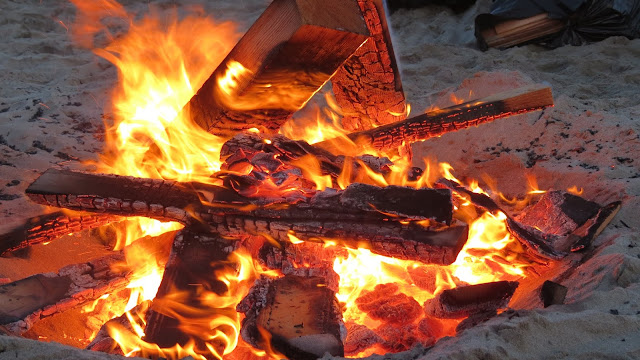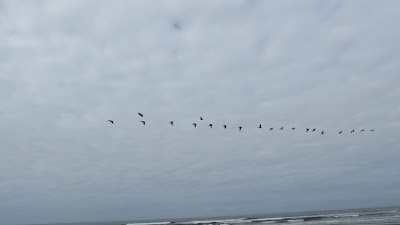More on the coast...
One July evening, a fire on the beach with friends. The following is a Kaleidoscope of the colors at sunset the same evening:
Was surprised to see that had caught a pelican in this shot.
More shots in August...
One day the air over the ocean became a busy hwy with pelicans and other birds flying south. These took a short stop to turn and grab some food.
Time for a little learning. This is an osprey, most apparently don't sport just a hair style, this one is obviously a trend setter.
The osprey or more specifically the western osprey — also called sea hawk, river hawk, and fish hawk — is a diurnal, fish-eating bird of prey with a cosmopolitan range. It is a large raptor, reaching more than 60 cm in length and 180 cm across the wings. Wikipedia
Did you know: Ospreys hover over the water, plunging feet first when they spot prey.
 This little one seems to be a Semipalmated (wading birds that have toes webbed for part of their length) Plover (a short-billed gregarious wading bird, typically found by water but sometimes frequenting grassland, tundra, and mountains).
This little one seems to be a Semipalmated (wading birds that have toes webbed for part of their length) Plover (a short-billed gregarious wading bird, typically found by water but sometimes frequenting grassland, tundra, and mountains).
Next to apartment in Astoria, this mom and twins have been hanging out and the cat dreams of grandeur.
Bald eagles are a regular sight here.
Elk on the beach have become more common, apparently. It was a first for me. Had seen them in the distance but didn't make it in time to see them at the surf's edge.
Per usual, my photos again have a lot of animal bums. Elk bums are very photogenic at least.
Several young ones in this heard, some still will spots.
Apparently this is the "king of the hill". There were a couple of bull elks but with smaller racks.
It can be difficult to eat breakfast in piece with a determined seagull around. He would not be budged despite efforts to shoo away and off my car.
Huge jelly fish have been on the beach. The clear one is called
Aurelia aurita, or Moon Jelly. Can survive in a great variety of waters more common in tropical waters and can be 4' in diameter and sometimes larger.
The orange colored one seems to be a Pacific Sea Nettle and tentacles can still sting even after death.
Just after telling a friend that I had never seen a whole flock of pelicans on the ground I came across this long line. A few seagulls in the mix.
The beach has been a constantly changing adventure both in terrain and what happens to wash up, land or wander on to its sands.
I am very thankful to be able to spend a good amount of time on it.

 Later that day was a spectacular sight.
Later that day was a spectacular sight.






















